Bruce J Tinworth continues his investigation into the intriguing Australian export model of Norton’s famous sporting twin. He discovers the Model 7R, a rigid-framed Dominator, trimmed in iridescent colour-schemes, often incorporating innovative and upgraded components…
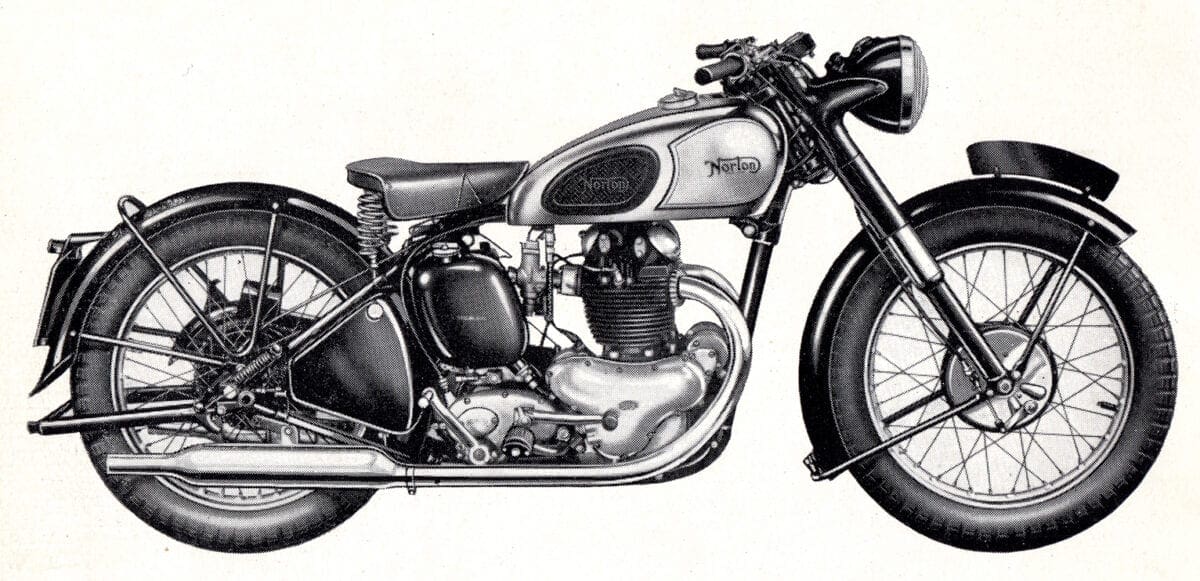
In August 1950, 84 motorcycles were displayed in Brisbane at Australia’s annual motorcycle exhibition. The models displayed by Andersons Agencies included a new rigid-framed twin-cylinder Norton, the first on display in Australia, priced at £258. Just three Model 77s were dispatched to Andersons: one was blue, one was grey, and it is likely the other was painted the traditional Norton colours of the time. Before the year was out, more than 85 additional machines had been dispatched to Australia, half were painted blue, with just five painted grey.

To differentiate this machine from the plunger-framed Model 7, it was marketed as the rigid-framed Model 77, variously advertised as the Model 77 Sport Twin, the Dominator Rigid and the Dominator Rigid Sport. The iron-head Model 77 ‘Sports’ was promoted as being 2” lower and 10lb lighter than the Model 7 Dominator. Adding to the confusion, one advertisement by Andersons Agencies listed the machine as the ‘New Norton 7R RIGID FRAME 500cc twin.’
Fast forward 40 years to the 1990s when a number of rigid-framed Norton twins began appearing at swap-meets across Australia. Originally these were presumed to be just aftermarket specials – probably just a Model 7 engine in a Model 18 frame. That was until it became obvious that they were all stamped with the Norton Code 13. Initially Norton experts denied their existence – just a Model 7 with the wrong code stamp. After all, NOC records show that the Code 13 did not appear on machines until 1955. But these few rigid-framed twins seemed to be an anomaly, in that they all had the Norton date letters ‘E’, ‘F’ and ‘G’, for the years of 1950, 1951 and 1952, respectively.
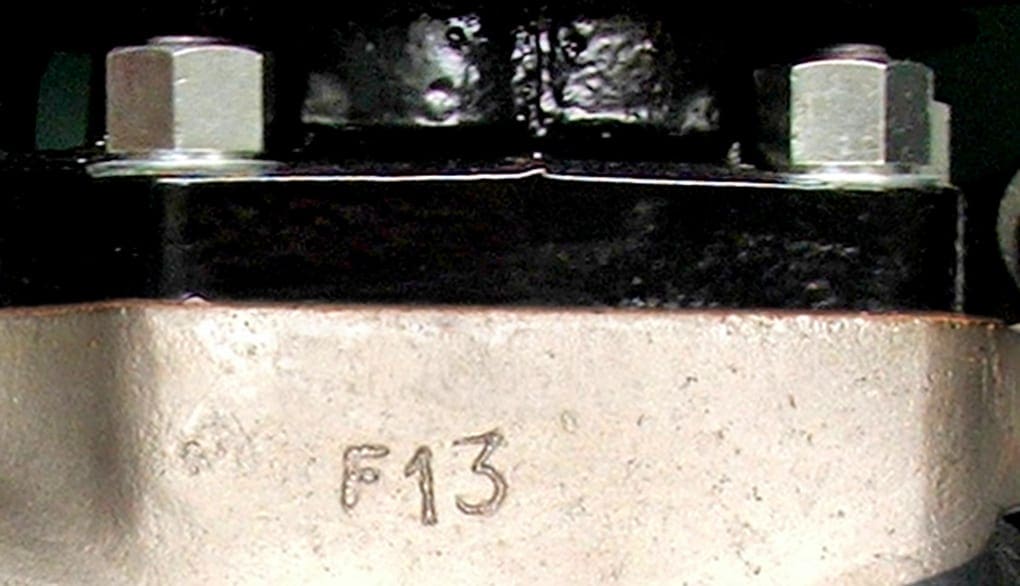
F = 1951 and 13 = the 497cc Dominator twin…
As more such machines began appearing on the Australian historic bike scene, the mystery grew. In 1992, correspondence regarding the rigid-framed twin was sent to the Norton Owner’s Club in the UK. The reply came from John Hudson who was NOC president at the time. As a former engineer with Norton Motors, Hudson commented that ‘…it was built before my time with Norton commenced, and until you wrote I had not heard of the Code Number 13 referring to anything other than the Model 50…’ He passed the enquiry to the club librarian for further research into this hitherto unknown Norton.
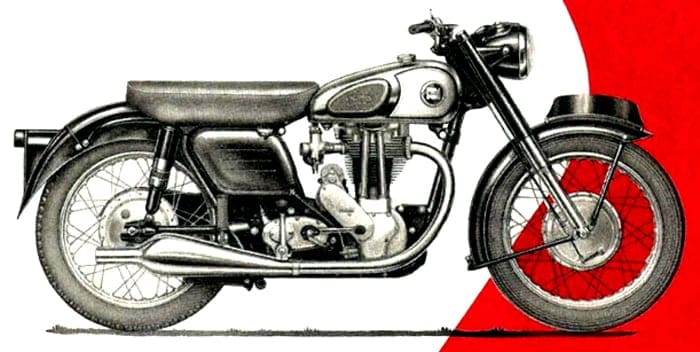
Hinton’s extensive research into Norton’s factory records documented that between April 1950 and February 1952 a total of 237, rigid-framed twins were dispatched to Australia. The records list the shipping agents as Tozer, Kempsey & Milburn, P&R Williams, and Carr & Elliott.
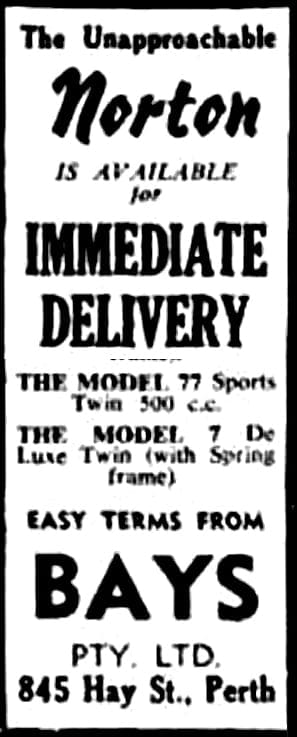
The Australian Norton Agents who received the Model 77s were documented as Anderson’s (Brisbane), Bays (Perth), Disney (Melbourne), Hazell & Moore (Sydney & Newcastle), King’s (Launceston) and Lenroc’s (Adelaide).
Records indicated that 96 of these twins were blue and 16 were grey. Eye-witness accounts indicate that the other 125 were painted the traditional Norton colours of the day.

Without being able to actually inspect one of these motorcycles, NOC club librarian Neville Hinton wrote an article in 2002, describing the 1950-52 Model 77 as having the engine and gearbox of the Model 7, in a Model 18 frame. A study of all the 1950 rigid frames has disproved this assertion. While this Model 77 does share many components common to the Model 7 and the Model 18, a more recent examination of several original and complete machines has identified a significant number of unique components. These include the frame, fuel tank, front brake plate, carburettor, oil tank fixtures, rocker-box oil lines, chain-guard, battery carrier, head steady and silencers.
The Model 77 featured an ES2 / M18 shaped, platform-mounted fuel tank, but without rocker-box cut-outs underneath. The two-hole kneepads of the Model 77 had different hole-centres to the Model 7. The only similarity to the Model 7 fuel tank was the inclusion of an oil pressure gauge.
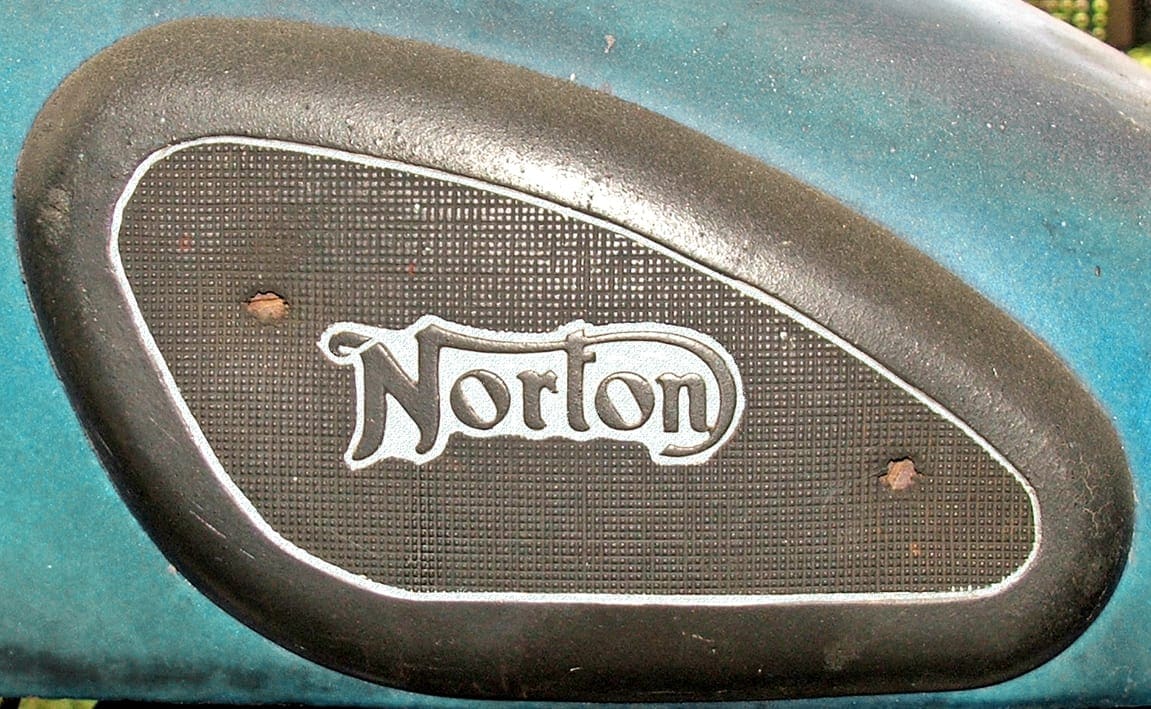
The polished, light alloy, front brake plate of the Model 77 would become standard on the Model 7 the following year. Most of the Model 77 engines found to date have an identical iron head to the Model 7, but a few sported alloy heads of the same specifications. A number of 1950-52 Model 77 iron and alloy head engines have been stripped to reveal 1/8” oversize inlet valves. This may have been Norton engineers experimenting with improved gas flow, or the later initiative of some innovative owners.
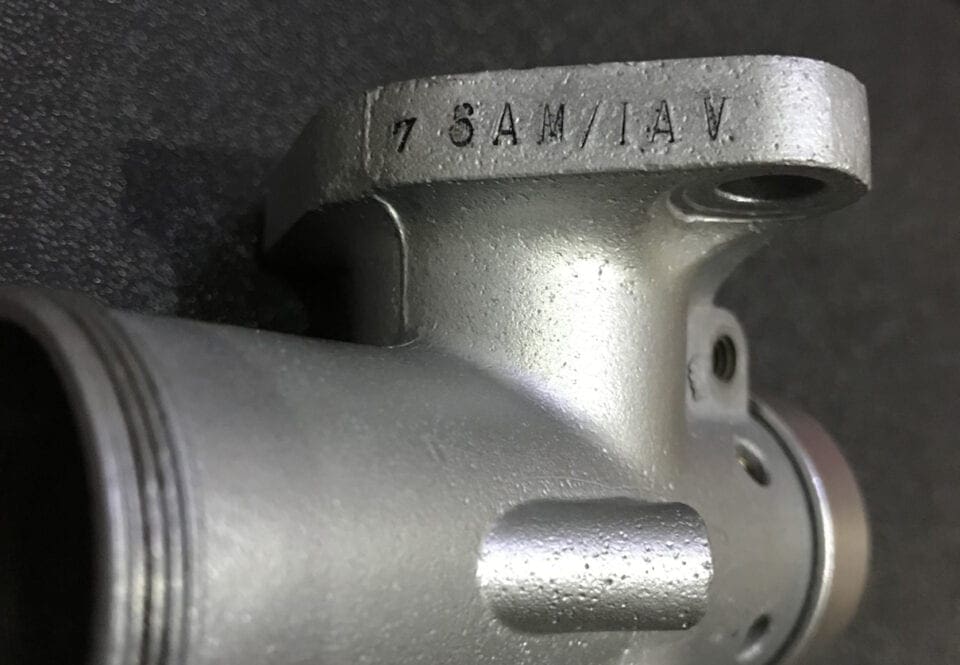
The pre-Monobloc carburettor from the Model 77 is stamped with the code 76AM/1AV. Initially this proved to be a mystery, as this code does not appear in any Amal catalogues. A chance comment in an email to Burlen resulted in a copy of the original Amal Specification Card for the 1950 Norton R Twin. According to Burlen, this carburettor’s documentation on a specification card (but not in Amal’s catalogue) indicated that it was not a one-off but a small production run, possibly less than 250 units. The reference date on the Amal specification card is within days of when the first Model 77 rolled out of the Norton factory. Subsequently, the enhanced features of this pre-Monobloc carburettor became standard on the Model 7.

Faced with all this evidence about the Australian version of the Dominator, many armchair experts were unable to deny their existence any longer. They then argued that these machines were just an amalgam of obsolete components, cobbled together and fobbed off on an unsuspecting colonial market. So it was time to see what the many and varied independent authors have had to say about this obscure machine…
———
Words: Bruce J Tinworth / Photos: Bruce J Tinworth, RC RChive




